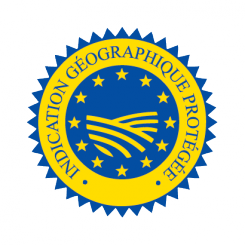- Home
- →
- AN A – Z OF CHARCUTERIE
Charcuterie from A to Z
Discovering Charcuterie Specialities
FOOD LABELLING
From nutritional information, to where the food was made or storage advice, consumers want to be kept informed. To keep things simple, we’ve put together a few pointers here to help you navigate the mass information available.
The following information must feature on food packaging:
1. List of ingredients
-
- All ingredients must be listed in order of importance by weight with the main ingredient first.
- All allergens must also be listed.
- Additives (added in small quantities during the manufacturing process to increase shelf life, improve texture, appearance etc.) are classified by category and designated by their name or European code number: letter E (Europe) followed by 3 digits.
- Any GMOs (genetically modified organisms) must be listed.
2. Nutritional information
Must include as a minimum:
-
- Energy value (in kJ and kcal)
- Amount of fat and saturated fats (in g)
- Amount of carbohydrates and sugars (in g)
- Amount of protein (in g)
- Amount of salt (in g)
3. Instructions for use
-
- Consumption dates: these indicate how long the food will be at optimum quality and flavour.
- Best before date: “Best before + (day, month, year)”; “Best before + (month, year)” or “Best before + (year)”. This date relates to food quality and indicates the period beyond which the taste or nutritional qualities of the product may deteriorate.
- Use-by date: “Use by + (day, month)”. The Use-by date is about safety and is the most important date to remember. It appears on food with a short shelf-life such as fresh dairy, meat products, fish, eggs or ready-to-eat salads. You can eat food until and on the use-by date, but not after as the food could be unsafe to eat.
- Date of freezing (for frozen goods): “Product frozen on…” (day, month, year). This appears on frozen meat, frozen meat preparations and frozen unprocessed fishery products.
4. Name of food item on sale:
This is the name of the product. If the product has a “made-up” name, the actual name of the food, which must be as precise as possible, can be located in the list of ingredients.
5. Net weight
6. Country or place of origin:
The country of origin or provenance of ingredients must be indicated, since in the absence of such information, the consumer could be misled as to the country of origin or true provenance of the product.
7. Optional additional information

Identification mark: this oval-shaped mark indicates that the establishment where the product was manufactured has been approved by the department for veterinary services for the processing of food of animal origin in accordance with Community hygiene rules.

Green Dot: this logo certifies that the manufacturer is part of the Eco-packaging programme, which subsidises selective collection and sorting of packaging waste for recycling.
Official quality designations: there are a number of official quality indicators that may feature on packaging, such as Protected Designation of Origin (PDO) or organic farming. To qualify for one of these labels, the product must meet a number of specifications, and compliance is regularly audited by approved bodies.

AB certification identifies products that are 100% organic or contain at least 95% organic agricultural products in the case of processed products. This logo is the exclusive property of the Ministry of Agriculture, Agri-Food and Forestry, which defines its usage.

Protected Geographical Indication (PGI) identifies an agricultural product, raw or processed, whose quality, reputation or other characteristics are linked to its geographical origin.

Protected Designation of Origin (PDO) indicates a product whose main production steps are carried out according to recognised practice in the same geographical area, which gives the product its specific characteristics. It is a European sign that protects the product name throughout the European Union.

Controlled Designation of Origin (CDO) or AOC (appellation controlee) applies to products that meet the criteria of PDO and protect the name in France. It is a step towards the PDO, which is now a European symbol.













